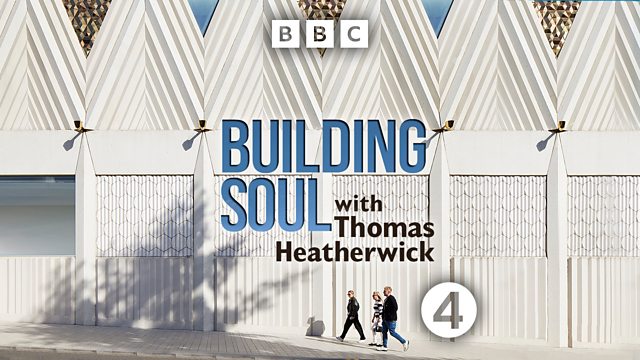“The look of modern buildings is a catastrophe” [Thomas Heatherwick, architect]
.
Some four years ago, the Building Better Building Beautiful Commission led by philosopher Roger Scruton published its highly critical report into modern architecture – with this response at the time from the Architects’ Journal:
“Living with Beauty” recommends ‘humane densification’ rather than high-rise towers and advocates Create Streets’ preferred model of mid-rise blocks, streets, squares and buildings with ‘clear backs and fronts’.
But its sections on the negative influence of modern architecture bear the clear stamp of Scruton, who was reinstated to the commission in July after being sacked from his post, and his profound dislike of ’the modernist vernacular’. The report argues there is a ‘great divorce’ between what the general public likes and what architects and developers have provided. This gap between ‘popular taste and professional advocacy’ was caused, among other things, by the influence of the modern movement and ‘guided by Le Corbusier, the Bauhaus and the Russian Constructivists’, the report says.
It adds: ‘We admire much that they achieved. But they were a dominating force, whose influence far surpassed the reasons given in support of it. Their campaign against “pastiche” and “historicism” has intimidated planners and led to the uniform production of unadaptable boxes, supposedly expressive of the “spirit of the age”, rather than streets lined by neighbourly frontages and façades.’
The FT carries an interview today from architect Thomas Heatherwick: ‘The look of modern buildings is a catastrophe’ – with very similar sentiments and a challenge to the profession:
In his book Humanise, out on Thursday, Heatherwick derides architects as members of a modernist “cult”, which indoctrinates them during their seven-year training into thinking they don’t need the public’s approval. The result is the UK’s commercial buildings are so unloved that they have an average lifespan of perhaps 50 years, leading to huge carbon emissions as they are replaced. Not since Prince Charles said architects “talk by the yard, and should be kicked by the foot” has a leading public figure launched such an assault on the profession. “That’s almost 40 years ago!” He claims he’s taking the lead reluctantly. “Richard Rogers is no longer around, who’s going to do it?”
The renowned designer puts forward his provocative manifesto for less boring architecture and says the profession needs to care more about the experience of people on the street – again reported by the Architects’ Journal:
There’s a problem in our towns and cities. Almost everyone can feel it. The outsides of most new buildings are dull, dreary and depressing. Except for a few rare exceptions, most of them are boring. Boring is not about whether a building is traditional or modern, curved or square, iconic or everyday. It’s about a lack of ‘engagingness’, the deprivation of brain-nourishing information, and an absence of necessary visual complexity.
To be absolutely clear, what I’m talking about is the outsides of buildings. Typically, in my experience, the interiors of most new buildings are very good. But these interiors are often paired with a presence on the street devoid of any interest; which is weird, because in reality, every day a thousand times more people pass by the outsides of most buildings than the insides. You may be thinking this is nothing more than a sentimental, backward-looking, moan about the absence of ‘niceness’. But it’s much more problematic than that. There’s now scientific evidence showing that plain, flat, featureless buildings profoundly affect our mental health. They lead to physical and societal problems. Colin Ellard’s 2012 study shows that boring urban environments cause serious stress to people’s brains and bodies…
He is midway into a major Radio 4 series:
Why Boring Buildings Are Bad for Us
The way cities get built is a quiet global catastrophe affecting all our lives. Buildings are too flat, too plain, too straight, too shiny, too soulless, too boring. This is the belief of designer Thomas Heatherwick.
In this first part of a new series for Radio 4, Thomas is on a mission to explain why this is far from a trivial issue – that it’s bad for our health, bad for society and bad for the planet.
Backed by the latest cutting-edge scientific research, Thomas exposes the damage being done by the identikit modern urban environments scattered across the world.

And this is the latest:
The Cult of Modernist Architecture
Why and when did our buildings become so boring? Anyone exploring the streets of our oldest cities can see this wasn’t always the case.
In part 2 of this series, Thomas Heatherwick argues that a cult of Modernism took hold of the architectural establishment in the 20th century, with an obsessive focus on form follows function at the expense of visual complexity and delight. Is one man, known as Le Corbusier, really responsible for creating our age of boring buildings?
Join Thomas as he challenges the architectural establishment to stop slavishly following Le Corbusier’s vision long after it ran out of steam. Thomas also argues that the legacy of modernism conveniently suits developers whose primary concern is the maximisation of short-term profits, at a huge cost to the environment as well as to our civic identity and personal wellbeing.